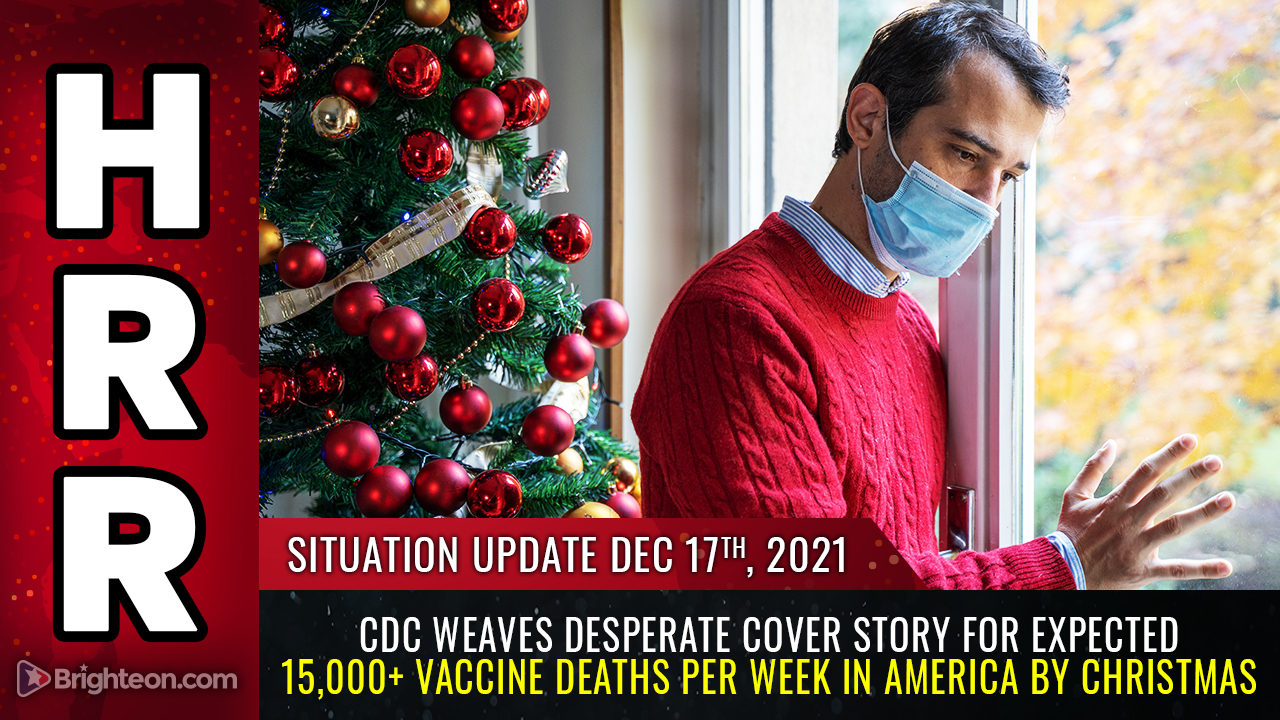CORONA COVER-UP: Dozens of test samples from earliest confirmed coronavirus cases deleted from NIH database
06/28/2021 / By Nolan Barton

Dozens of test samples from the earliest confirmed coronavirus (COVID-19) patients in Wuhan, China were found to have been wiped from the National Institute of Health (NIH) database used to track the evolution of SARS-CoV-2, the virus that causes the disease.
The files could have provided vital clues about how the virus originated and how long it had been spreading before the seafood market outbreak in December 2019.
Jesse Bloom, a virologist from the Fred Hutchinson Cancer Research Center in Seattle, spotted the deletion and managed to recover some of the data. He said he believed China had removed the files to “obscure their existence.”
Forty-five positive samples had originally been uploaded to the NIH’s Sequence Read Archive of by the Wuhan University in March 2020.
The samples were published as part of a study into diagnosing COVID patients using PCR tests – just days before the Chinese government issued an order requiring approval of the publication of all coronavirus data.
Bloom noted all 45 samples have since been pulled from the database, with “no plausible scientific reason for the deletion.” He detailed the cover-up in the scientific paper titled “Recovery of deleted deep sequencing data sheds more light on the early Wuhan SARS-CoV-2 epidemic.”
The NIH confirmed the sequences had been removed in June 2020 at the request of the investigator who originally submitted them in March 2020, and said it was standard practice to allow this.
News of China’s attempt to cover up the virus’s tracks came amid mounting suspicion that SARS-CoV-2 might have accidentally leaked from a high-level biosecurity laboratory in Wuhan – the acknowledged ground zero of the pandemic.

Recovered samples show genetic differences from virus that spread around the world
Bloom was able to partially recover 13 of the deleted samples using Google Cloud and proceeded to sequence the viruses. He noted several genetic differences between the strains in the deleted samples and the virus that eventually spread around the world.
The virologist said most of the data recovered suggested that the virus was circulating long before China’s official timeline.
He found that the early samples of the virus were more evolved than would be expected of a pathogen that had recently jumped from animals to humans – but did not say it gave more weight to the lab-leak theory. (Related: Experts provide key pieces of evidence supporting coronavirus lab-leak theory.)
“This study does not provide any additional strong evidence favoring either natural zoonosis or lab accident,” Bloom said in an email to CNN.
“Rather, it shows that there are additional sequences from relatively early in the outbreak that are still unknown, and in some cases have mutations that suggest they are probably evolutionarily older than the viruses from the Huanan Seafood Market.”
Bloom found that those market viruses have three extra mutations that are missing from SARS-CoV-2 samples collected weeks later. Those later viruses look more like coronaviruses found in bats. “They’re three steps more similar to the bat coronaviruses than the viruses from the Huanan fish market,” Bloom said.
Bloom’s findings suggest COVID was spreading before December 2019
In a Twitter thread detailing his findings, Bloom wrote: “Although events that led to emergence of #SARSCoV2 in Wuhan are unclear (zoonosis vs lab accident), everyone agrees deep ancestors are coronaviruses from bats.
“Therefore, we’d expect the first #SARSCoV2 sequences would be more similar to bat coronaviruses, and as #SARSCoV2 continued to evolve it would become more divergent from these ancestors. But that is *not* the case!
“Instead, early Huanan Seafood Market #SARSCoV2 viruses are more different from bat coronaviruses than #SARSCoV2 viruses collected later in China and even other countries.” (Related: WHO team lead: Coronavirus “already circulating” and had “mutated 13 times” within China before being reported.)
British experts commenting on the study said it confirmed long-held suspicions that COVID was spreading before December 2019. They also warned that it highlighted the flaws in the World Health Organization‘s investigation into COVID’s origins, which is being carefully supervised by China.
“The study further cements the fact the virus was circulating in Wuhan before the outbreak in December,” Lawrence Young, a molecular biologist at the University of Warwick, told MailOnline.
“This just shows how important it is to understand the early spread of the virus and any future investigation really does need to look seriously at the whole issue. It’s particularly worrying that crucial data was uploaded and then deleted. It’s odd behavior.”
Follow Pandemic.news for more news and information related to the coronavirus pandemic.
Sources include:
Tagged Under: biological weapons, biosecurity, biowar, conspiracy, coronavirus, coronavirus patients, Cover-Up, covid origins, covid-19, covid-19 pandemic, genetic sequences, Huanan Seafood Market, lab accident, lab-leak theory, mutations, pandemic, SARS-CoV-2, scientific paper, seafood market, zoonosis




















